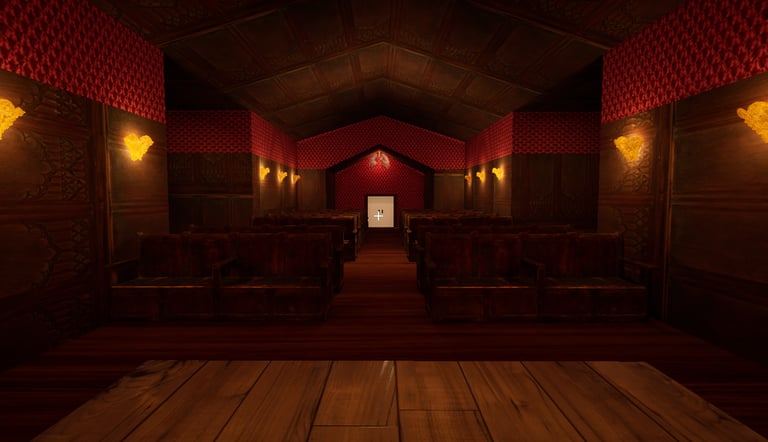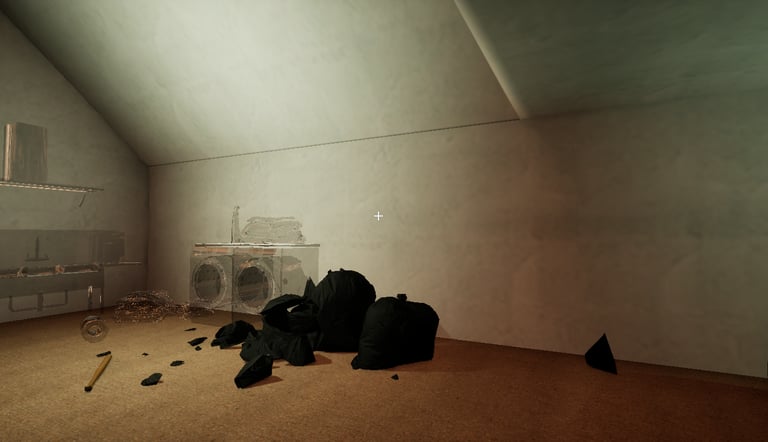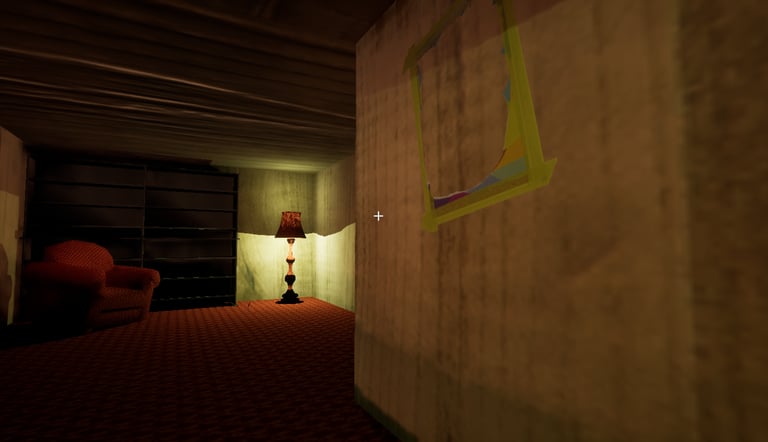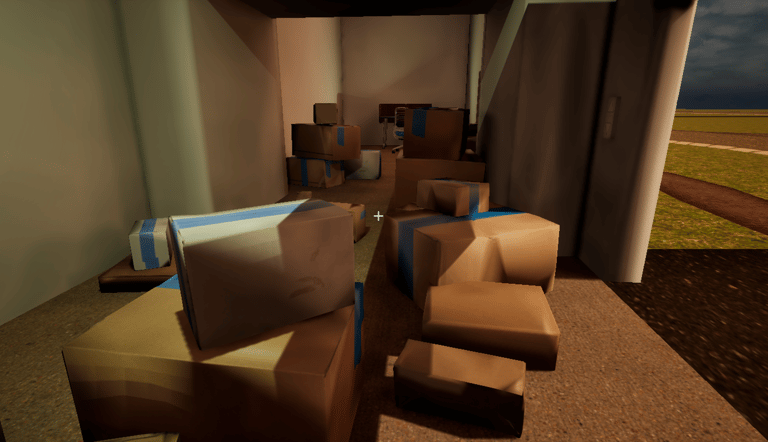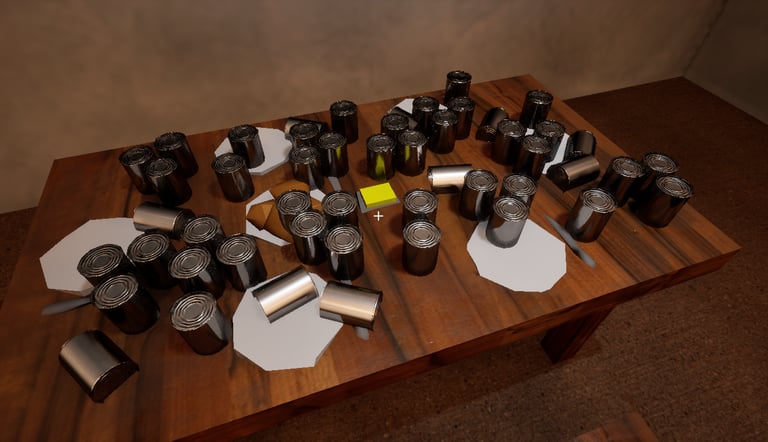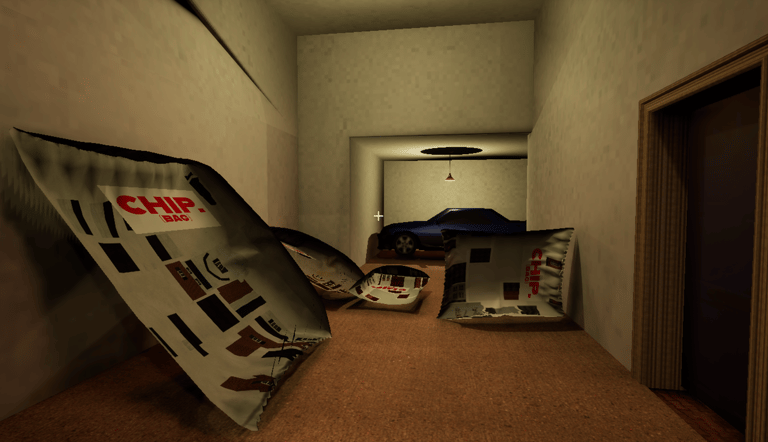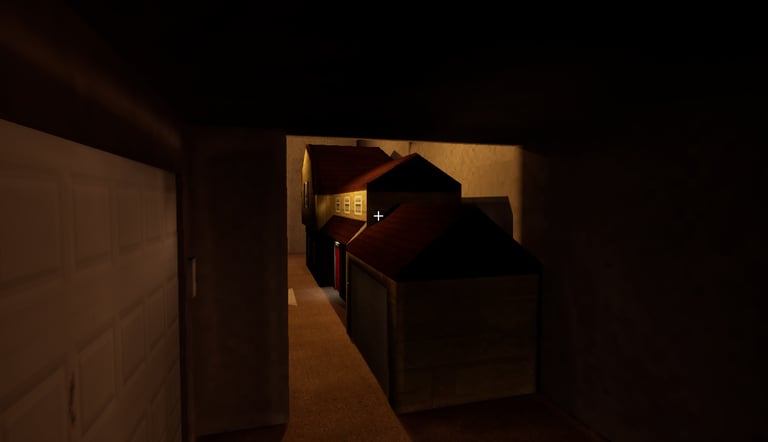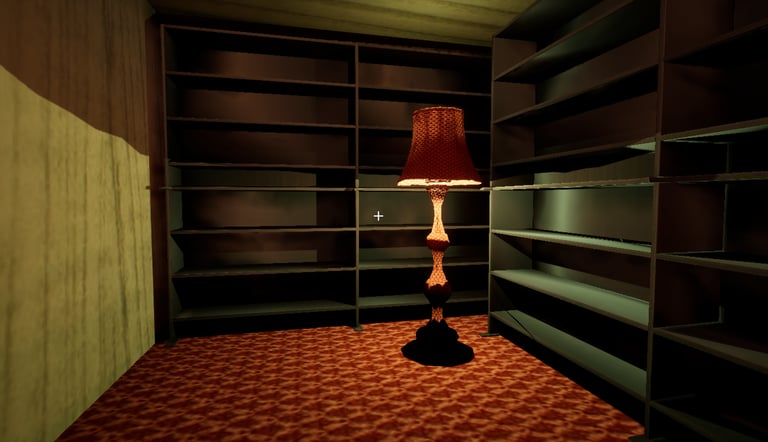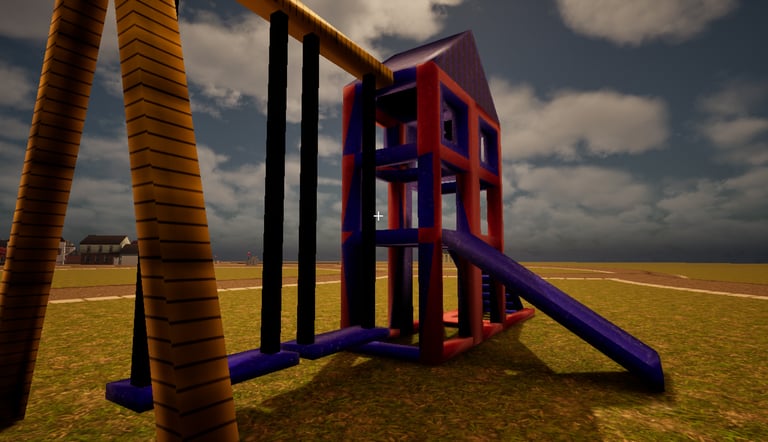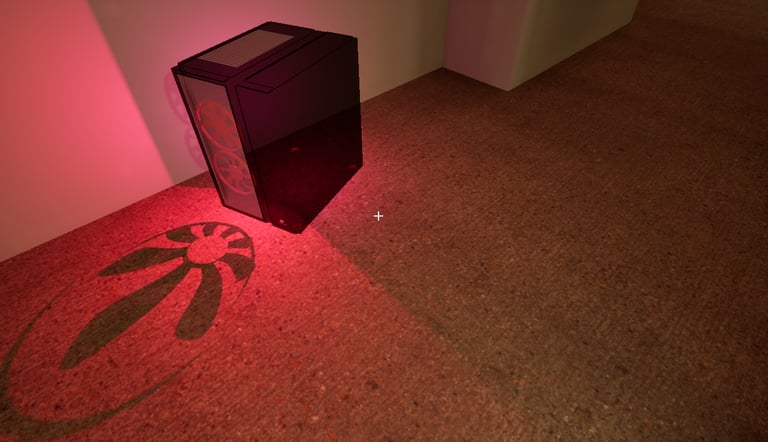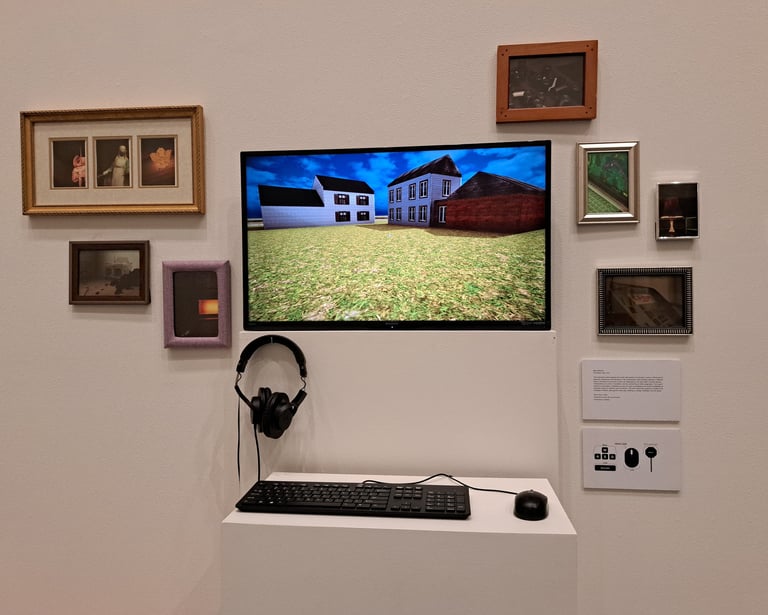"Block Party"
"Block Party" is an interactive piece that examines the lonely atmosphere of suburban America. As a resident of suburban upstate New York for nearly my entire life, I have watched this strange world evolve. As the years pass, I’ve witnessed public parks grow sparse, libraries lose to Starbucks, churches struggle atop their weak social infrastructures, and my neighborhood fall silent. Of course, these bleak observations are products of maturity and unprecedented events like the COVID-19 pandemic, but I observe nonetheless. This virtual environment is a product of a thought experiment where I have attempted to understand what makes my home so isolating, and whether something outside is killing these spaces, if they are killing themselves from the inside out, or if they are dying at all.
"Block Party" is a vast yet little-populated environment made of seven houses, a library, a church, a playground, a set of electrical boxes, and many, many undriveable cars. The neighborhood is a reflection of my own neighborhood with 1970s-style houses, remnants of a rotting wooden fence that once spanned the entire circle, and gritty streets with side gutters as subpar substitutes for sidewalks. Each house represents a unique reasoning or element of this lonely suburban atmosphere that I have encountered: The evolution of play from communal to solo, family meals as a construct over a reality, excessive car ownership and dependency, the fragility of change against the stubbornness of routine, the toxicity of easy consumption mixed with remote work, the comfort found in stagnation, and the physical illusion of mentally exiting a space. Participants in the piece can choose how to navigate and interact with the map, but the slow-moving pawn and unintuitive roadscape make choices overwhelming. As someone who does not have a car, nor can drive very well at all, I often feel stuck on the inside looking out when I am visiting my home. This piece simulates this feeling while also making the participant aware of their physical body in contrast to the unnaturally moving invisible pawn that they control. Rather than an inhabitant of the world, the participant is a visitor ungrounded to place.
The piece is contradictory in that it both exercises agency and proves its lack of agency. The participant is invited to move pieces of the world around as they wish, and they are also given the option to reset the world to its original state. If they choose to leave the space as they altered it, with a garage left open or a box out of place, they leave an imprint for the next participant who occupies the pawn. This is particularly interesting to me, as I am drawn to evidence of movement or change. As said by performance philosopher Peggy Phelan, “something substantial can be made from the outline left after the body has disappeared” (Phelan 3). While the piece will always be experienced differently by different people, how does prior interference change the experience? The interactive element of the piece is also indicative of entanglement, another idea I am deeply fascinated by. Feminist theorist and physicist Karen Barad explains:
“To be entangled is not simply to be intertwined with another, as in the joining of separate entities, but to lack an independent, self-contained existence. Existence is not an individual affair. Individuals do not preexist their interactions; rather, individuals emerge through and as part of their entangled intra-relating” (qtd. in Rosiek, et al. 332). The pawn does not exist without the existence of the virtual environment at large, or if it did, it would not be the same pawn. In the same way, we do not exist if not products of our environment, and me, a product of my neighborhood.
There is a meta quality to "Block Party," as it critiques the ways in which technology and nonhuman agency has potentially taken away from human communities while the artwork also uses the same technology to share a message. In this way, I do not hope to promote disengagement with these technologies, but instead have participants reframe their relationships with these technologies and virtual settings as having an equally potent entangling effect as any physical environment does. It is only after this acceptance that we can work to chip away the loneliness epidemic in America.
Works Cited
Phelan, Peggy. Mourning Sex: Performing Public Memories. Routledge, 1997.
Rosiek, Jerry Lee, et al. “The New Materialisms and Indigenous Theories of Non-Human Agency: Making the Case for Respectful Anti-Colonial Engagement.” Qualitative Inquiry, vol. 26, no. 3-4, 2020, pp. 331-46, doi.org/10.1177/107780041983135.
ABOUT THE PROJECT / FULL STATEMENT
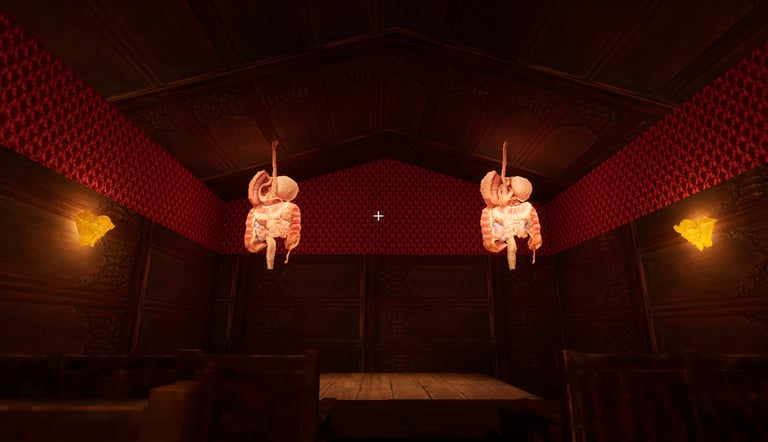

SELECTED SCENES FROM THE ARTWORK
